Find some else portmortem

Find someone else.
This game was my first venture into the visual novel genre. It would seem like a perfect fit for me considering my fondness for story, characters and lots of choices.
This game, in many ways, needed to be made. I crafted it from frustration over my own life situation. It became something else, not just a game.
Seeing how it’s been some time since I released it, I feel it’s time to reflect a bit about the game.
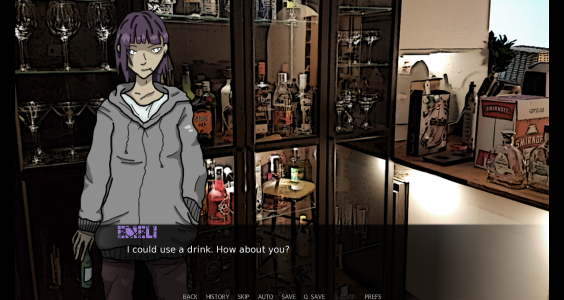
1. Planning and drawing
I started by coming up with an idea interesting enough to start pre-production for. In my case this meant that I spent some time figuring out the simplest of concept for the story and characters.
Something along the line of:
Lina: ill.
Klara: diabetic.
Inger: lost.
Then I drew the art for the three main characters and discovered their personalities through the drawings. After that I tested them out by inserting them into the engine. Alas, they were too small.
This is usually the point where I decide if the game can work or not. Since my drawing skills are somewhat below the average manga-artist’s I figured I’d go for something different. A sort of fusion of manga and the darker skandinavian comic-style. I purposely made it more scetchy to give it a grungy look. Which I think worked. It's coherent, stylish and unique, which is always better than well made and boringly bland.
I also wrote the entire story, scene by scene in a notebook.
● What I did right:
Testing the graphics in the engine to give myself some clue about how the finished product would come out. From this I could redraw the art early on, before I did too much stuff in the wrong format.
It was also nice to have the entire story written down with simple notes. Made it easier to organize the whole thing.
Another thing I did right was to choose something really personal to build a game around. Which is really the strength of indie-games, that they’re able to be more personal and uncensored, compared to more mainstream games.
I also kept the scope of the game on the shorter side. Making it manageable.
● What I did wrong:
I should have looked at different UI-solutions earlier. After a certain point it becomes almost impossible to change those things without a mountain of work.
To be fair. I tend to neglect the UI for as long as I can in all of my projects. It’s not really the most interesting thing to fiddle around with.
Didn’t really create any buzz around the game in these early stages. I’m bad like that. I always wait to promote my games until they're completely finished, in case something unexpected happens and I don’t finish it.
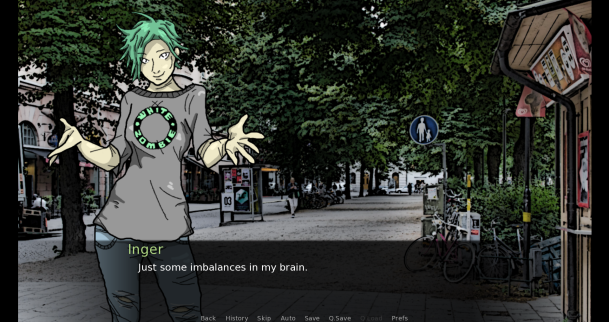
2. Programming and drawing
Ren’Py uses python for scripting, which is surprisingly intuitive. Haven’t really used it before, but I found it real easy to figure out. It probably helps that I have some basic knowledge in programming from using different engines for other games in the past.
During this time in my life a person close to me had become very, very ill over a few years and we weren't sure if she'd make it. It was like your whole life was put on hold for a while. It's draining to worry like that all the time, trying to keep that person's spirit up, while also trying not to fall to pieces yourself everytime you stop and think too much.
There are many ways to try to handle that kind of pain. I made a game about it.
● What I did right:
Found a time-effective way to make backgrounds that didn’t take that much time. I first used the method to make stand-in graphics while I built the beta. The original idea was to redraw the backgrounds later in development. Thankfully I tried early on to do this, but it took way too long.
Considering the amount of backgrounds I needed, this just wouldn't cut it. So instead I used the same method that I’d used for getting stand-in art. I snapped a real picture and then postirized it, and fiddled around with some of the values and made some layers with shadows and light. The result was quite nice. A bit gritty and harsh, like the story itself.
● What I did wrong:
Used stand-in art for the map-system. It took so long to make and would have been ridiculously faster to fix had I just gotten the right art from the beginning. Found bugs because of that mistake all the way up to the release.
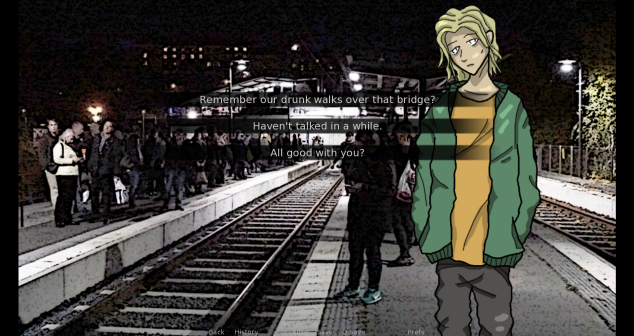
3. Polishing and drawing
After programming the entire game and drawing all the graphics for it, it was time for some polish.
This is usually the point where I get sick of the game, having to play it over and over again to test out all the different little paths. It's usually at this point that I find out what works and what doesn't.
For me, building games are in many ways like being allowed to rest for a while. I don't think. I don't worry. I just... build. It helped when the person close to me got more and more sick during this period. It came a time when she only slept, cried and... broke into pieces in front of my eyes.
All the plans we'd made together, and the future we were walking towards, was suddenly just gone. What do you do in that situation? You have to figure out things you don't want to figure out when you're way too young for it. Do you stay, even if it's only pain and illness there, and then death? And then? Emptiness for you, that gets to stay behind. Is it worth it?
You think you're going to make the right choice, until you're there yourself, year after year, just feeling yourself fading away.
● What I did right:
I’d made it real easy for myself to change most of the background graphics. This was because of a lot of planning and structuring of the game all the way from the beginning. Naming everything in clear, easy to understand ways and categorizing them . You really gotta plan ahead to make your job much easier.
I also used beta-testers to help find those little bugs, and the stuff that you miss when you've been building the same game for several months. It's like you don't see some stuff after a while. You just get it. Beta-testers are good for finding out if you get the conveyance right, such as which parts of the story the player understands and which parts they don't. Like Kottis, he was way different in the beta, and the players didn't get why he was there.
Back then you didn't interact with him. He just talked a bit about your choices and then left. This made the player unsure why he was there and found it boring for him to just be there and not being able to interact with him. I changed it around and I do believe it turned out real well with having him affect the dialogue of the player.
If you get a choice between ugly but clear, and pretty but confusing, I’d say go with ugly, always.
● What I did wrong:
Could have used more beta-testers, probably. That’s something you always can, but don’t have time for.
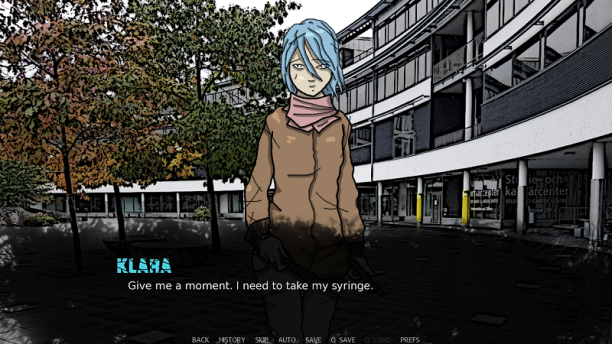
4. Publishing and drawing
I published Find someone else on Itch.io on November 2017 and on Steam on April 2018. Can’t say if it’s a good time for releasing a game or not.
But from the first release at November 2017, when everything was going to pieces with the person close to me and we'd given up hope, to April 2018. Something happened.
Someone died.
A donor that gave us both a new chance to live, a new future to try and find. It's still a long way to go, and it's a different future that awaits us, but it's something.
It's everything.
● What I did right:
I made entries on the biggest forums for visual novels to generate some buzz. I also put together a nice little trailer and published it on Youtube. Standard stuff, really.
● What I did wrong:
I’d be the first one to admit that my marketing skills are a bit lacking. I do my best with what I got, but to be honest I don’t have that much time after my full-time work is done and I’d rather use that time to do something I like, such as building games.
This might not really be something I did wrong, but it’s worth mentioning. For this game I tried a “pay-what-you-want” option. Mostly, due to the length of the game, I wanted the player to be able to see if they liked the game before they bought it and a demo just wouldn’t be possible.
Though. It didn’t really work that well.
Only a very small percentage bought the game, which is alright and I'm ever so thankful to those buyers, but if your livelihood is dependent on this money I wouldn’t recommend it.
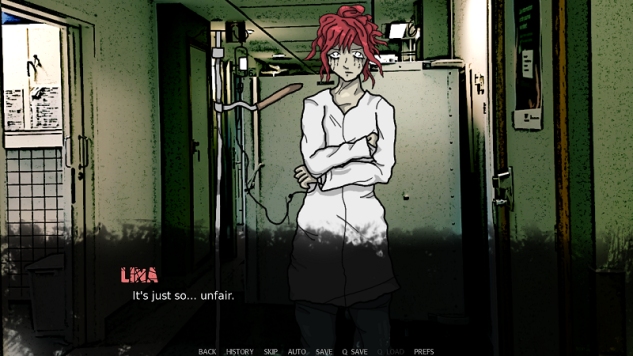
5. Last few words
I’m very proud of this game. It’s my own unique take on the visual novel-genre and I’ll definitively make another one in the future.
If nothing else, these types of games are real easy to balance compared to rpg:s.
Get Find someone else
Find someone else
A visual novel about the ever-changing nature of relationships and the hardships of dealing with loss.
| Status | Released |
| Author | Red Skald |
| Genre | Visual Novel, Interactive Fiction |
| Tags | Dark, Dating Sim, Meaningful Choices, Multiple Endings, relationship, Ren'Py, Romance, Story Rich |
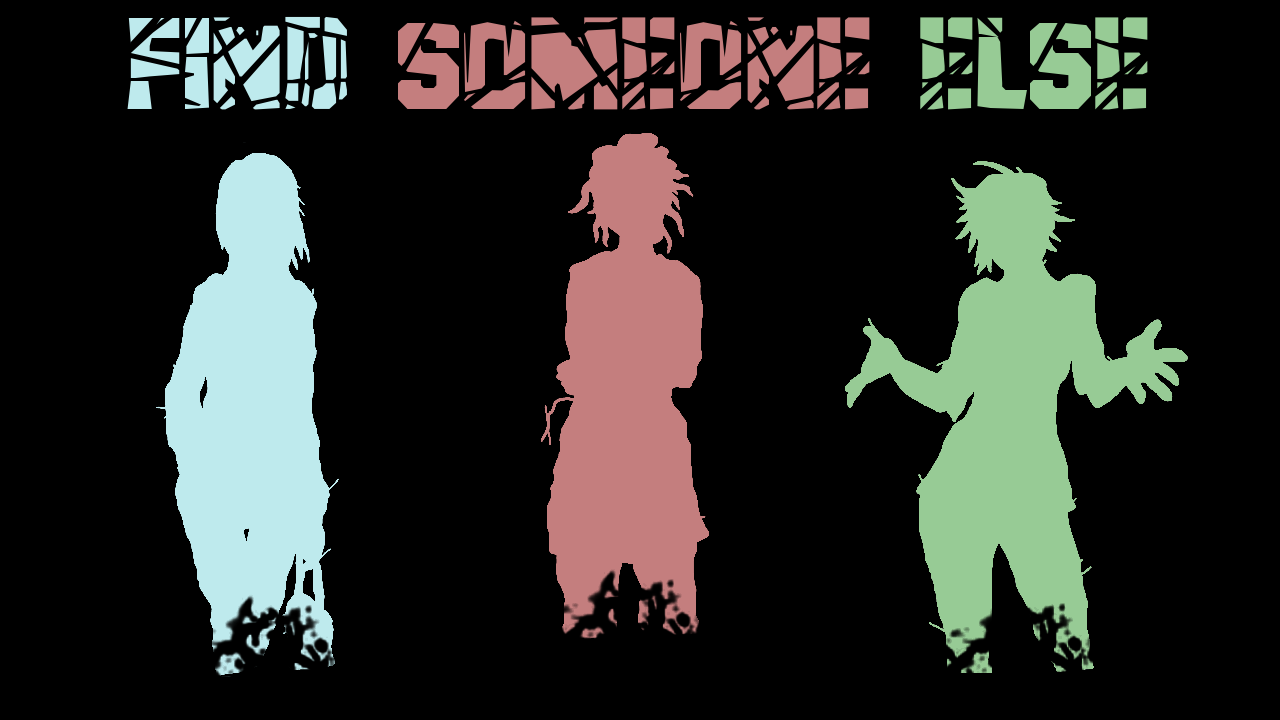
Leave a comment
Log in with itch.io to leave a comment.